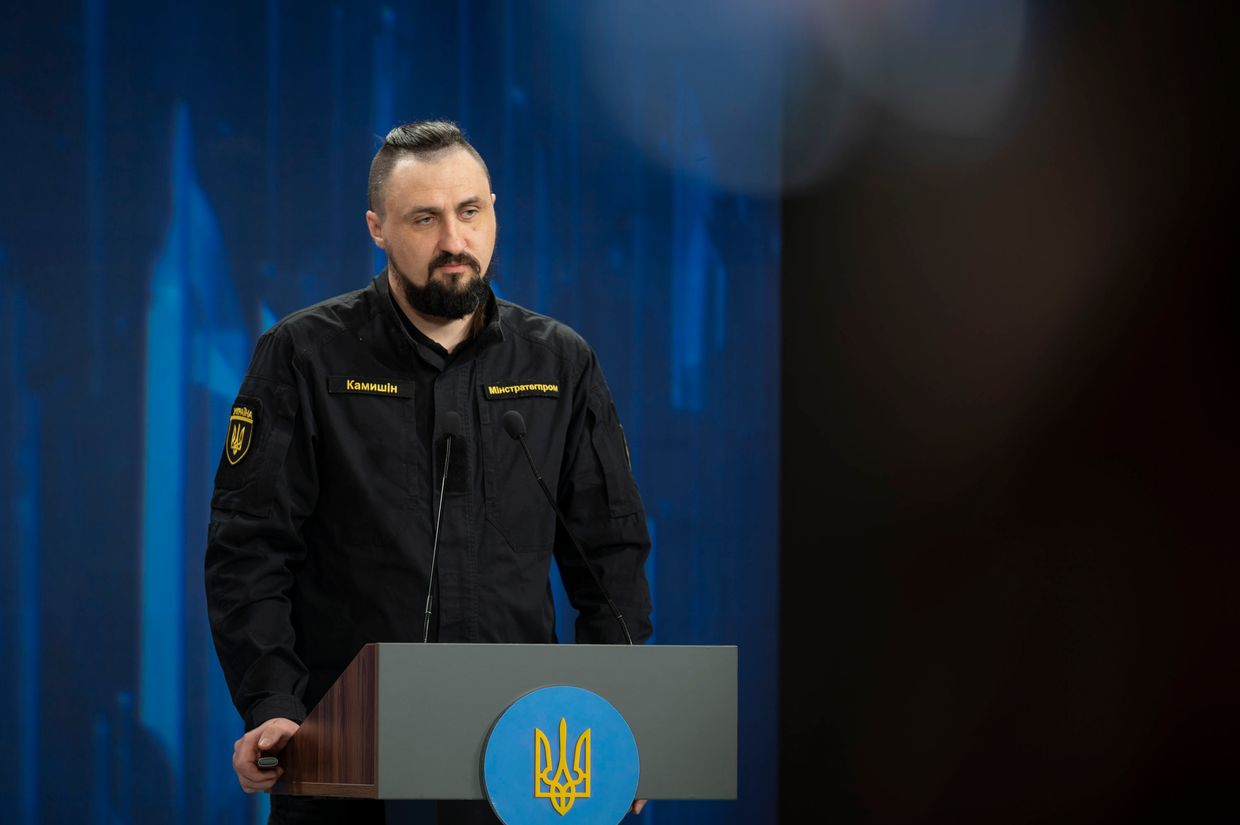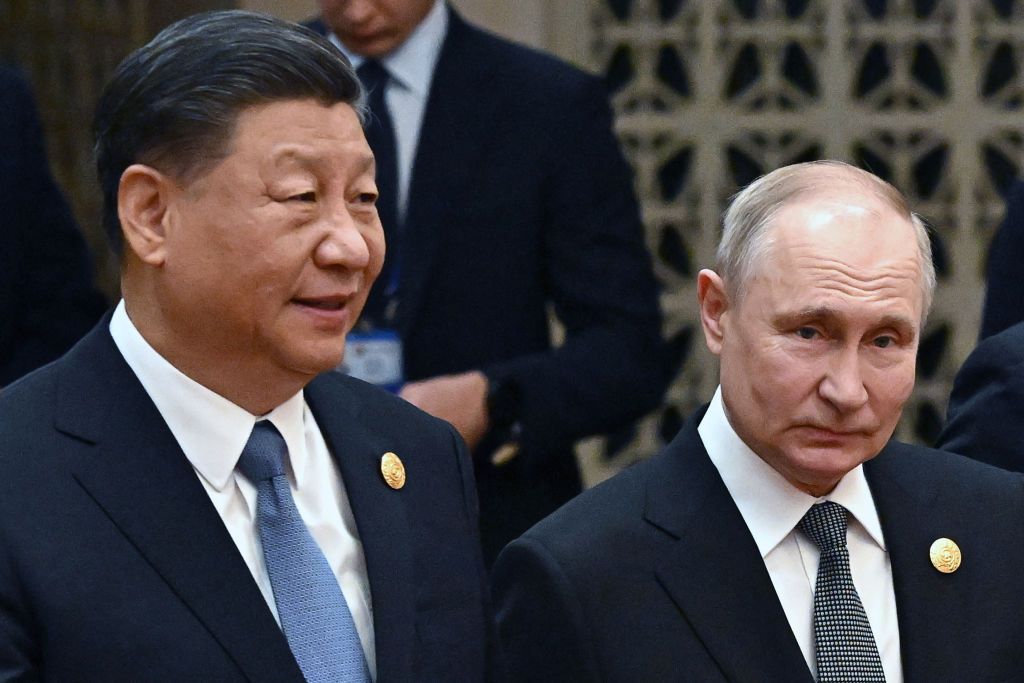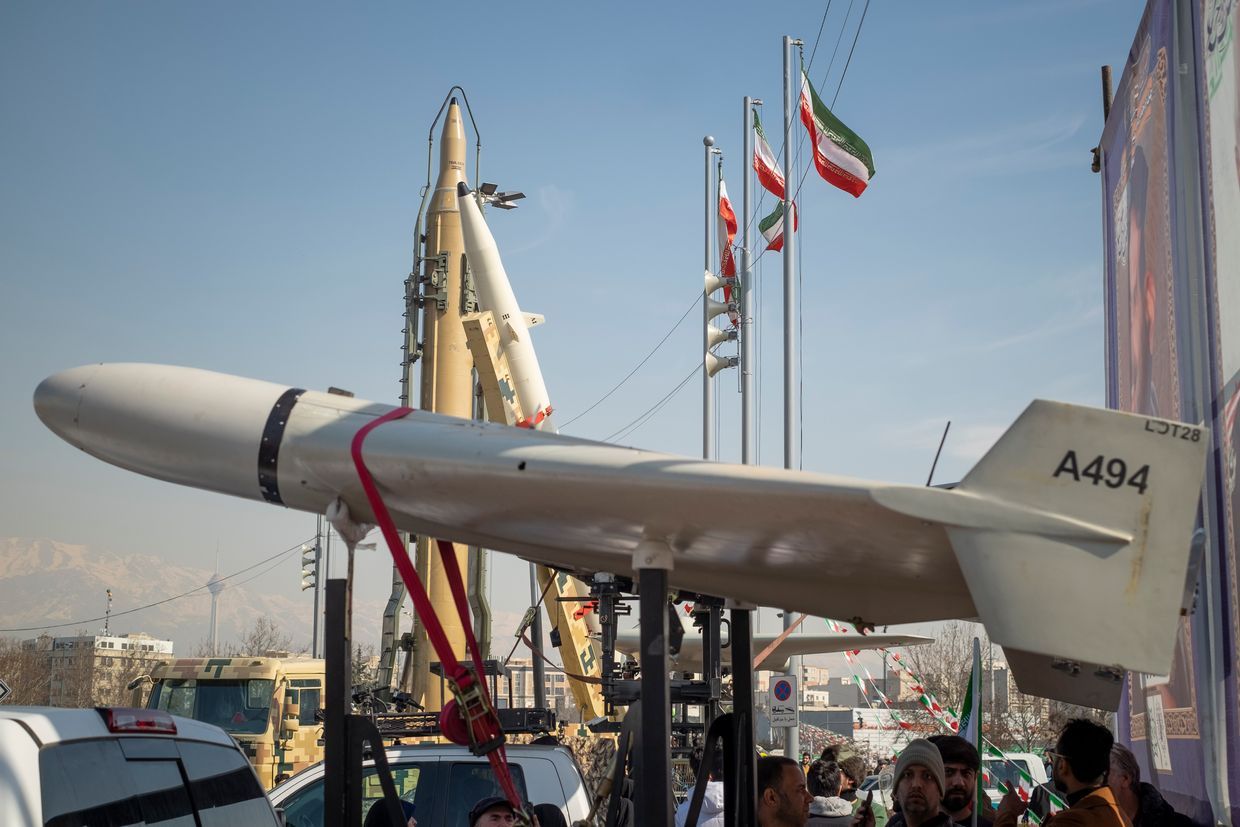Ukraine war latest: US secretly provides Ukraine with 100 ATACMS; Denmark announces additional military aid for Kyiv

Key developments on April 25:
- Denmark announces additional $633 million in military support to Ukraine
- NYT: US secretly sent Ukraine over 100 ATACMS last week
- Reuters: Satellite imagery shows ship likely used to transfer North Korean arms to Russia docked in Chinese port
- Reuters: Next round of EU sanctions on Russia to target shadow fleet, ships transporting North Korean equipment
- German defense minister: Russia already produces surplus military equipment
- Media: Number of Russian drones on front lines has doubled in 3 months
The Danish parliament agreed to add 4.4 billion Danish kroner ($633 million) in military support to the country's Ukraine Fund in 2024, the Danish Foreign Ministry announced on April 25.
With these additional funds, total financing for military support under the Danish Ukraine Fund in 2023-2028 will amount to 64.8 billion Danish kroner ($9.3 billion). Most of these funds set aside for 2024 have already been allocated, leading Danish MPs to add an additional $633 million.
"From the start of the war, Denmark has been one of the most active donor countries," Danish Defense Minister Troels Lund Poulsen said in a statement.
"We must continue to be so, and that is why I am delighted that a broad majority of the parties in the Folketing support us adding another 4.4 billion Danish kroner to the Ukraine Fund for military support in 2024. It is absolutely crucial that we show the Ukrainians that we stand behind them in the current serious situation."
Military support under the Ukraine Fund will be used to pay for the provision of weapons, military equipment, and training efforts. This includes, among other things, "the purchase of equipment and weapons by Danish and foreign defense industry," in addition to financial donations in cooperation with other countries.
According to the Kiel Institute for the World Economy (IfW Kiel), which tracks international aid for Ukraine, Denmark is the fourth largest provider of military aid to Kyiv, committing around 8.4 million euros ($9 billion) as of January 2024.
At 2.3% of GDP, Denmark is the second largest provider of military aid in terms of percentage of GDP.
NYT: US secretly sent Ukraine over 100 ATACMS last week
The U.S. secretly shipped over 100 long-range ATACMS missiles to Ukraine last week, some of which were immediately deployed and used to strike a Russian military airfield in Dzhankoi in occupied Crimea, the New York Times reported on April 25.
Washington announced an aid package worth $300 million to Kyiv on March 12 while Congress debated further aid to Ukraine.
In February, U.S. President Joe Biden instructed his team to include the long-range ATACMS in the package, doing it in secrecy for security reasons and "to maintain the element of surprise for Ukraine," Reuters reported on April 24, citing an unnamed U.S. official.
The NYT, quoting another unnamed U.S. official, said it was these missiles that struck the airfield in Dzhankoi on April 17.
Ukraine's military intelligence on April 18 said that Ukrainian forces had destroyed four S-400launchers, three radar stations, a command post for air defense operations, and air space surveillance equipment Fundament-M in the attack.
"These strikes proved — once again — that Ukraine can notch battlefield victories when given the right tools," Senator Roger Wicker of Mississippi, the senior Republican on the Armed Services Committee, said in a statement quoted by the New York Times.
"Ukraine can put a target on every Russian asset in Crimea, including critical ammunition and fuel depots. Imagine if they had these missiles two years ago."
The U.S. first delivered mid-range older models of ATACMS missiles to Ukraine last fall, following months of deliberation. The older models have a range of 165 kilometers (roughly 100 miles).
Newer models of ATACMS have a maximum range of around 300 kilometers (around 190 miles), and their delivery to Ukraine was previously unknown to the public.
Kyiv has repeatedly pressed its Western allies for longer-range weapons, including the newer ATACMS, but partners hesitated about delivering arms that could potentially be used to strike within Russian territory.
The Pentagon also raised concerns that sending Ukraine the long-range missiles could damage the U.S.'s military readiness by depleting its own stockpiles, Reuters reported. The U.S. was able to address these concerns in January, leading to the ultimate decision to send them to Ukraine.
Russia's use of North Korean long-range ballistic missiles against Ukraine and attacks on Ukraine's critical infrastructure influenced Washington's decision to send Kyiv long-range missiles after all, Reuters reported.

Reuters: Satellite imagery shows ship likely used to transfer North Korean arms to Russia docked in Chinese port
A North Korean-registered cargo ship implicated in the illicit transfer of arms to Russia has been docked at a Chinese port for months, Reuters reported on April 25, citing satellite imagery.
North Korea has been shaping up as Russia's leading weapons supplier, reportedly providing Moscow with extensive military packages, including ballistic missiles and over 3 million artillery shells.
Satellite imagery has previously suggested that North Korean military assistance has been flowing to Russia across their shared border in the far east.
At the same time, the U.K.'s Royal United Services Institute (RUSI) think tank said the cargo ship the Angara, currently docked at a shipyard in China's eastern Zhejiang province, has been involved in carrying North Korean military cargo to Russia overseas.
A spokesperson for the U.S. State Department said it knew of "credible, open-source reports" that the Angara is docked in China, in what would be a violation of a U.N. resolution regulating trade with North Korea.
The Angara, which was sanctioned by the U.S. in 2022, has made at least 11 trips back and forth between North Korea and Russia, RUSI said.
The Chinese Foreign Ministry told Reuters it had no information about the ship, and neither the Russian Foreign Ministry nor the shipyard that the Angara is docked at responded to Reuters' requests for comment.
U.S. Secretary of State Antony Blinken arrived in China on an official visit on April 24, during which it was reported that he would deliver an in-person warning to China over its support for Russia's full-scale war against Ukraine.
Expanded trade with China has played a key role in allowing Moscow to keep its economy running and ramp up its military industry despite Western economic pressure.
The U.S. has repeatedly warned China against providing Russia with lethal military aid and urged Beijing to use its influence over Moscow to help end the war.
China has insisted that its alliance with Russia is normal and that it has not supported either Ukraine or Russia with weapons throughout the full-scale war.
Reuters: Next round of EU sanctions on Russia to target shadow fleet, ships transporting North Korean equipment
The next round of EU sanctions against Russia is expected to target Russia's "shadow fleet" of oil tankers that transport oil above the $60 per barrel price cap and other cargo ships carrying North Korean military equipment to Russia, Reuters reported on April 25, citing a source from the EU.
EU Trade Commissioner Valdis Dombrovskis said earlier in April that the bloc is preparing its 14th round of sanctions against Russia, which should be adopted in spring.
The EU, the U.S., and the Group of Seven (G7) countries imposed a $60-per-barrel price cap on Russian seaborne oil in December 2022 as part of the effort to cut Moscow's fossil fuels revenue.
While initially successful, Russia eventually managed to largely dodge the effects by using a "shadow fleet" of uninsured tankers. Kyiv's partners have been intensifying their efforts to enforce the cap.
Reuters reported that Russia's April oil and gas revenues will be almost double that of the same month last year, illustrating that Western sanctions targeting Moscow's oil and gas industries have not been as effective as hoped.
Russia has also countered its massive battlefield losses by increasing its military ties with other pariah nations, namely Iran and North Korea.
North Korea has been shaping up as Russia's leading weapons supplier, reportedly providing Moscow with extensive military packages, including ballistic missiles and over 3 million artillery shells.
While satellite imagery has suggested that North Korean military assistance has been flowing to Russia across their shared border in the far east, other deliveries have possibly been carried via cargo ship.
The 14th round of sanctions will also reportedly target 40 additional companies based in the United Arab Emirates, Kyrgyzstan, Turkey, and China that allegedly sell dual-use technology to Russia.

German defense minister: Russia already produces surplus military equipment
Russia is already producing more arms and military equipment than it needs for its war against Ukraine, and is filling its weapons warehouses, German Defense Minister Boris Pistorius said, as reported by the German television channel n-tv on April 25.
Despite Western efforts to undermine Russia's industrial and military output, the country is only increasing its investment into arms production, allocating a record portion of its 2024 federal budget for military needs.
As Russia switches into a war economy mode, "a large part or part of what is newly produced no longer goes to the front, but ends up in warehouses," Pistorius said on air of the ARD program Maischberger.
The minister warned against thinking that Russian President Vladimir Putin is stockpiling weapons only "out of caution." Instead, the Kremlin's chief may have other "plans" in mind, Pistorius added.
Russia's arms production has put Ukraine at a disadvantage on the battlefield, allowing Russian troops to outshoot Ukrainian defenders 10 to one in some areas.
"We still haven't seen where is Russia's breaking point,'" Mark Riisik, a deputy director in the policy planning department of Estonia's Defense Ministry, told The Guardian.
"It's (Russian arms production) a lot higher than we expected, really," he added.
Ukraine has struggled to keep up with Russia in this regard, as the Ukrainian and allied military production capacities often lag behind the Russian ones.
CNN reported in March that Russia makes three times the number of artillery shells that Washington or the EU can provide to Kyiv.
While the West appears to be picking up the pace and aiming to increase its production, it may take a year or more before the efforts bring fruit.
Media: Number of Russian drones on front lines has doubled in 3 months
The number of drones being used by Russian forces on the front lines has at least doubled in the last three months, Ukrainska Pravda reported on April 25, citing undisclosed military sources.
The still relatively fledgling field of drone warfare has become an arms race between Ukraine and Russia since the start of the full-scale invasion.
The sources in the General Staff of Ukraine's Armed Forces told the outlet that Ukrainian efforts to counter drones by electronic means were becoming less effective as Moscow's forces adapted to changes in technology.
"Roughly speaking, we made (electronic warfare) systems for the 900 MHz range. That was enough. Now (Russian forces) are making drones with a range of 700–1000 MHz," a source in the General Staff said.
"Accordingly, the means of radio-electronic warfare that we made earlier are no longer effective."
Every development in the drones themselves requires a corresponding advance in the electronic warfare (EW) technology used to counter them.
Russia has traditionally invested heavily in growing its EW capabilities, with development placed into overdrive as the full-scale war against Ukraine continues.
As the front lines have stabilized, its military has been able to place large numbers of its EW assets where they can have the greatest effect.
In his controversial opinion piece for The Economist published in November 2023, now-former Commander-in-Chief Valerii Zaluzhnyi wrote that Russia's superiority in the number of its EW assets was one of the main threats to the war turning positional.















